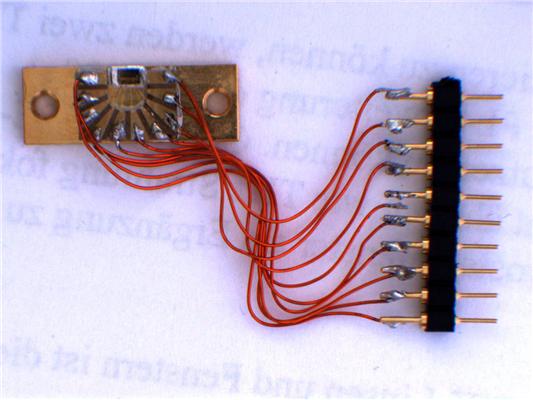
Terahertz Laser Mounted On A Chip Will Investigate Interstellar Medium
Terahertz radiation, the band of the electromagnetic spectrum between microwaves and visible light has promising applications in medical and industrial imaging and chemical detection, among other uses.
A new approach to making macroscopic terahertz lasers makes them smaller and lighter than ever before. Terahertz radiation, which lies between visible light and microwaves in the electromagnetic spectrum, has many potential applications in imaging and detection, but its use has been hampered by the size and power consumption of the equipment needed to generate it.
The major discovery was how to overcome an inherent drawback of this type of laser: they emit light out of the front and back of the substance used to generate the laser, known as the gain medium. Most terahertz applications require light in only one direction, so this property would normally waste half of the energy generated by the laser.

For more than 20 years, Qing Hu, a distinguished professor of electrical engineering and computer science at MIT, and his group have been working on sources of terahertz radiation that can be etched onto microchips. In the latest issue of Nature Photonics, members of Hu’s group and colleagues at Sandia National Laboratories and the University of Toronto describe a novel design that boosts the power output of chip-mounted terahertz lasers by 80 percent.
The mission is intended to determine the composition of the interstellar medium or the matter that fills the space between stars, and it’s using terahertz rays because they’re uniquely well-suited to the spectroscopic measurement of oxygen concentrations. Because the mission will deploy instrument-laden balloons to the Earth’s upper atmosphere, the terahertz emitter needs to be lightweight.
In some types of device, it can be counted simply by placing a mirror on the end of the gain medium where the laser is not needed. This was not possible in this case, because the wavelength of light was so long in the laser itself so short that most of the electromagnetic wave traversing the gain medium was traveling outside of the laser’s body, so a mirror at the end would only reflect a very small fraction of the total energy.
“We started with this because it was the best out there,” says Ali Khalatpour, a graduate student in electrical engineering and computer science and first author on the paper. “It has the optimum performance for terahertz.” Until now, however, the device has had a major drawback, which is that it naturally emits radiation in two opposed directions.
This is a standing wave, whose peaks and troughs reinforce each other so that if the wave were visualized it would appear to be static rather than traveling along the length of the waveguide. Lead author on the paper Ali Khalatpour explains that the team cut regularly spaced slits into the sides of the waveguide to allow terahertz radiation to leak out sideways.
The device has been selected by NASA, which co-funded the research, to provide terahertz emission for its Galactic/Extragalactic ULDB Spectroscopic Terahertz Observatory (GUSTO) mission. Approved in March this year, GUSTO is designed to look at the composition of the interstellar medium: the material between the stars in the Milky Way galaxy and its associated cosmic structures, the Magellanic Clouds.